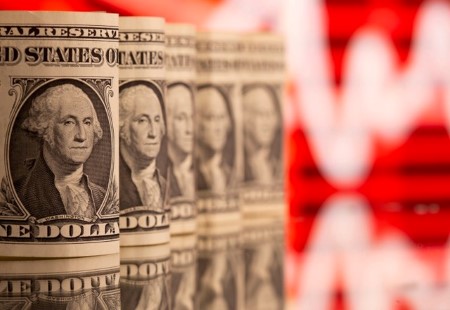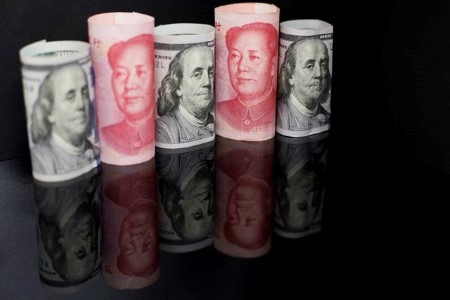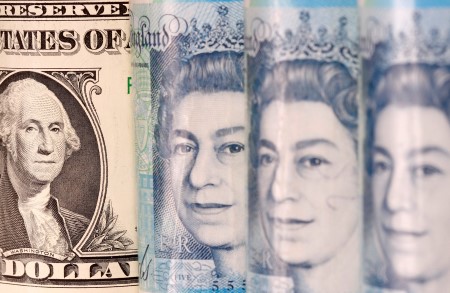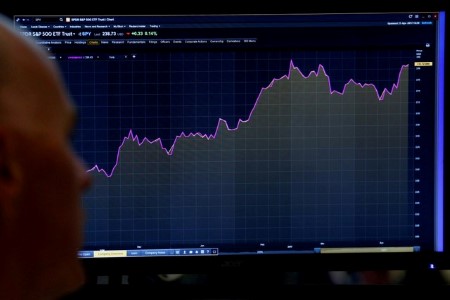NEW YORK, Oct 3 (Reuters) – The yield on the benchmark US 10-year Treasury note fell on Monday, after British Prime Minister Liz Truss was forced to abandon a tax cut plan while US economic data showed a slowdown in manufacturing.
Truss had planned to eliminate a tax of 45% on the top rate on income before backing down, part of a plan that led the Bank of England to step in and announce plans to purchase government debt to support the market that had been rattled by the economic plans in recent days.
“What was happening overseas and specifically in the UK and their fiscal policy changes, that was the piece that added an extra leg of volatility, specifically to the fixed income markets here,” said Jim Barnes, director of fixed income at Bryn Mawr Trust in Berwyn, Pennsylvania.
“This morning with what appears to be the UK stepping things back a bit, the market is taking its cue from some of the bond activity happening overseas.”
The yield on 10-year Treasury notes was down 13.4 basis points to 3.670%. The yield had hit a 14-year high of 4.109% last week before tumbling after the BoE’s intervention.
The yield on the 30-year Treasury bond was down 4.3 basis points to 3.721%.
Yields extended declines following the Institute for Supply Management’s (ISM) survey which showed manufacturing activity in September was the slowest in nearly 2-1/2 years as new orders contracted, with a measure of inflation at the factory gate decelerating for a six consecutive month, hinting the rising interest rates being used to combat inflation by the Fed may have softened demand for goods.
“Looking at ISM prices paid versus inflation and that stat alone says inflation should be in the fours, not the eights, we’ll see, obviously a lot depends on rents,” said Jack Ablin, chief investment officer at Cresset Capital in Chicago.
“Our risk is that the economy slows and interest rates drop, not that rates rise because inflation spikes up, and that is good news.”
Investors will eye a flurry of data this week, including several reports on the labor market culminating with Friday’s US payrolls report. Signs of a softening in the jobs data would likely be welcomed by investors as it could signal the US Federal Reserve’s attempts to slow the economy and tamp down inflation may be starting to have an effect.
Fed officials have been in sync as they have vowed to take aggressive measures in hiking interest rates to combat rising inflation. Federal Reserve Bank of New York President John Williams said on Monday that while there have been early signs that inflation is easing, the central bank still must continue fighting high prices.
A closely watched part of the US Treasury yield curve measuring the gap between yields on two- and 10-year Treasury notes, seen as a reliable indicator of an economic recession, was at -45.2 basis points, up from -57.85 hit two weeks ago.
The two-year US Treasury yield, which typically moves in step with interest rate expectations, was down 8.9 basis points at 4.120%.
The breakeven rate on five-year US Treasury Inflation-Protected Securities (TIPS) was last at 2.317%, after closing at 2.147% on Friday, which marked its lowest close in about 20 months.
The 10-year TIPS breakeven rate was last at 2.244%, indicating the market sees inflation averaging 2.2% a year for the next decade.
(Reporting by Chuck Mikolajczak; Editing by Andrea Ricci and Jonathan Oatis)







 DOWNLOAD
DOWNLOAD











